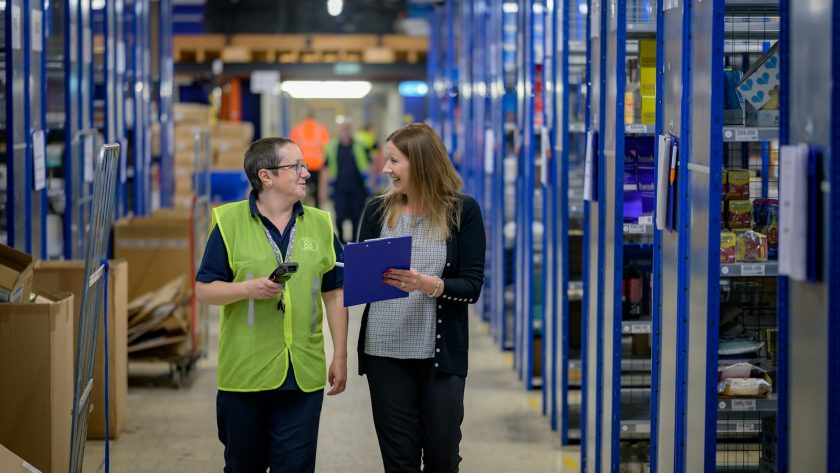Introduction to Cobots in Warehouse Operations
Cobots, or collaborative robots, are transforming the logistics and supply chain industry. These advanced robots work alongside human workers, enhancing productivity and safety in warehouse operations. With the rise of e-commerce and the increasing demand for efficient supply chain management, cobots have become essential for modern warehouses. This article explores how cobots are enhancing warehouse productivity and safety.
The Advantages of Using Cobots in Warehouses
Cobots offer numerous benefits in the realm of logistics and supply chain management. They are designed to collaborate with human workers, providing support in tasks that require precision, repetition, and strength. Here are some key advantages of using cobots in warehouses:
- Increased Efficiency: Cobots can work tirelessly without breaks, significantly increasing the output of repetitive tasks.
- Improved Accuracy: With advanced sensors and programming, cobots perform tasks with a high degree of accuracy, reducing errors and waste.
- Enhanced Safety: Cobots are equipped with safety features that allow them to operate safely alongside human workers, reducing the risk of workplace accidents.
- Flexibility: Unlike traditional industrial robots, cobots are flexible and can be easily reprogrammed to perform different tasks as needed.
- Cost-Effective: Cobots are generally more affordable and easier to implement than fully automated systems, making them a cost-effective solution for many warehouses.
The Role of Cobots in Enhancing Warehouse Productivity
In the context of warehouse operations, cobots are primarily used to handle tasks that are repetitive, physically demanding, or potentially hazardous for human workers. Some common applications of cobots in warehouses include:
- Material Handling: Cobots can be used to move goods from one location to another within the warehouse. They can transport items from storage areas to packing stations or assembly lines, reducing the physical strain on human workers.
- Picking and Packing: With advanced vision systems and grippers, cobots can accurately pick and pack items for shipment. This not only speeds up the process but also ensures that the correct items are selected and packed securely.
- Inventory Management: Cobots can assist in inventory counting and management. They can scan barcodes or RFID tags, update inventory records in real-time, and even restock shelves as needed.
- Sorting and Sequencing: Cobots excel in sorting items based on different criteria and sequence them for further processing. This is particularly useful in distribution centers where items need to be grouped and organized efficiently.
Improving Warehouse Safety with Cobots
One of the most significant benefits of deploying cobots in warehouses is the enhancement of safety. Here’s how cobots contribute to a safer working environment:
- Reducing Physical Strain: Cobots take over physically demanding tasks, such as lifting heavy items, which reduces the risk of musculoskeletal injuries among human workers.
- Minimizing Human Error: The precision and consistency of cobots ensure that tasks are performed accurately, reducing the likelihood of accidents caused by human error.
- Enhanced Monitoring: Cobots are equipped with sensors that allow them to detect obstacles and human presence, preventing collisions and accidents.
- Safe Collaboration: Cobots are designed to work alongside humans, with built-in safety features such as force sensors and automatic stop functions to avoid injuries during collaboration.
- Emergency Response: Cobots can be programmed to respond effectively in emergency situations, providing assistance and even guiding workers to safety.
Case Studies: Real-World Applications of Cobots in Warehouses
The following case studies demonstrate how cobots are being utilized in warehouses to improve productivity and safety:
- Amazon: Amazon has integrated cobots into its fulfillment centers to assist with picking and packing tasks. These cobots work alongside human associates, enhancing the efficiency of order processing and reducing the physical strain on workers.
- Siemens: Siemens has employed cobots in its manufacturing and distribution centers to handle material handling and assembly tasks. The deployment of cobots has led to improved accuracy and reduced the risk of injuries among its workforce.
- Zebra Technologies: Zebra Technologies utilizes cobots for inventory management and order fulfillment. The cobots help with scanning, sorting, and transporting items, resulting in more efficient and accurate warehouse operations.
Challenges and Considerations in Implementing Cobots
While cobots offer numerous benefits, there are also challenges and considerations when implementing them in warehouse operations:
- Integration with Existing Systems: Cobots need to be integrated with existing warehouse management systems (WMS) and processes, which can be complex and require careful planning.
- Training and Skill Development: Workers need to be trained to operate and collaborate with cobots, which may require additional investment in training programs.
- Initial Costs: Although cobots are cost-effective in the long run, the initial investment in hardware, software, and integration can be significant.
- Maintenance and Support: Regular maintenance and technical support are essential to ensure that cobots operate efficiently and safely.
Future Trends in Cobots and Warehouse Automation
The future of cobots in warehouses looks promising, with continuous advancements in technology and increasing adoption across the industry. Some emerging trends include:
- AI and Machine Learning: The integration of artificial intelligence and machine learning algorithms with cobots will enhance their capabilities, enabling them to learn and adapt to new tasks more efficiently.
- Advanced Sensors and Vision Systems: The development of more sophisticated sensors and vision systems will improve the accuracy and safety of cobots, allowing them to handle a wider range of tasks.
- Collaborative Fleet Operations: Multiple cobots working together as a coordinated fleet will further enhance productivity and efficiency in warehouse operations.
- Human-Robot Interface Innovations: Improved interfaces for human-robot collaboration will make it easier for workers to interact with and control cobots, enhancing overall operational efficiency.
Conclusion
Cobots are revolutionizing warehouse operations by enhancing productivity and safety. Their ability to collaborate with human workers, perform repetitive and physically demanding tasks, and minimize errors makes them invaluable assets in the logistics and supply chain industry. As technology continues to advance, the role of cobots in warehouses will only become more significant, driving innovation and efficiency in this critical sector.




